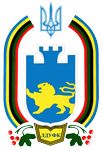Please use this identifier to cite or link to this item:
https://repository.ldufk.edu.ua/handle/34606048/10577| Title: | Designing an effective approach to sport for the integration in higher education institutions (the effects of yoga practice) |
| Authors: | Galan, Yaroslav Soverda, Iryna Zoriy, Yaroslav Briskin, Yuriy Pityn, Maryan |
| Keywords: | students readiness sport for all physical education model elements of yoga |
| Issue Date: | 2017 |
| Citation: | Designing an effective approach to sport for the integration in higher education institutions (the effects of yoga practice) / Yaroslav Galan, Iryna Soverda, Yaroslav Zoriy, Yuriy Briskin, Maryan Pityn // Journal of Physical Education and Sport. – 2017. – Vol. 17, is. 2. – P. 509 – 518. (Scopus) |
| Description: | The objective of this paper is to highlight the findings of students’ readiness for sport for all involvement through Physical Education classes. The research discloses the semantic structure of the problem under study, while blending motivational, cognitive, reflective and physical components. Authors’ attention is captivated by different focal points: HEIs students’ personal values and their positive attitudes about fitness development that is necessary for carrying on their lifelong enjoyment and engagement in exercise and physical activity. Thus, the authors delved into this aspect, immensely developing and contributing to understanding of the importance of fostering students’ interest in regular motor activity and maintaining a health-enhancing level of fitness. The outcomes of our research pointed out that sport for all is an avenue for engaging in developmentally appropriate physical activities designed for students to boost their fitness, gross motor skills, and health as well as form students’ reflective ability on motor activity and give them the necessary knowledge, capacity and skills. The program core was implemented to leverage the motivation-information, the reflective and the practical stage. Therefore, this paper provides information regarding the propound program efficacy and states that the index of EG students’ optimal and sufficient level of readiness for physical activities, being 2.7 % has raised to 56.2%. It is essential to stress out that after the experiment in EG there was not a single student to be completely dissatisfied with their Physical Education classes. It should be stressed out that the experimental verification revealed high efficiency of the authors’ designed model to achieve its ultimate goal; in addition, available research suggests increased number of students to self-exercise (62.8 %). Specifically, 33.8 % of respondents indicate their regular attendance of Yoga section; 20.1 % – practice our developed Yoga asanas; 8.9 % – became interested in Yoga and currently study a relevant literature. Evaluating and measuring indices, we came to the conclusion that there was a significant improving of the students’ readiness for sport for all (EG students’ indices after the experiment showed a high level of readiness for sport for all and equaled 2.9 %; sufficient level – 53.3 %; critical level – 43.8 %; insufficient level – 0.0 %, as compared to 0.0 %, 2.7 %, 91.3 %, 6.0 %, respectively, before the experiment). Regarding the therapeutic effects of Yoga and providing a comprehensive review of the benefits of regular Yoga practice, we should emphasize the following: as participation rates in mind-body fitness programs such as Yoga continue to increase, it is important for PE professionals to be informed about the nature of Yoga and the evidence of its many beneficial effects. |
| URI: | http://repository.ldufk.edu.ua/handle/34606048/10577 |
| Appears in Collections: | Наукові праці професорсько-викладацького складу ЛДУФК в базах даних Scopus, WoS, Tomson Reuters |
Files in This Item:
| File | Size | Format | |
|---|---|---|---|
| Galan_Y_Designing_an_effective_approach.pdf | 340.15 kB | Adobe PDF | View/Open |
Items in DSpace are protected by copyright, with all rights reserved, unless otherwise indicated.
